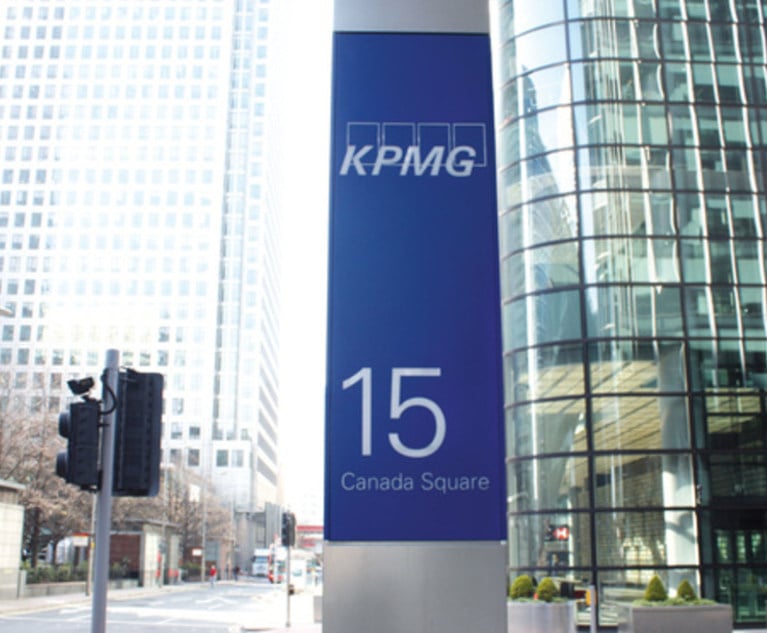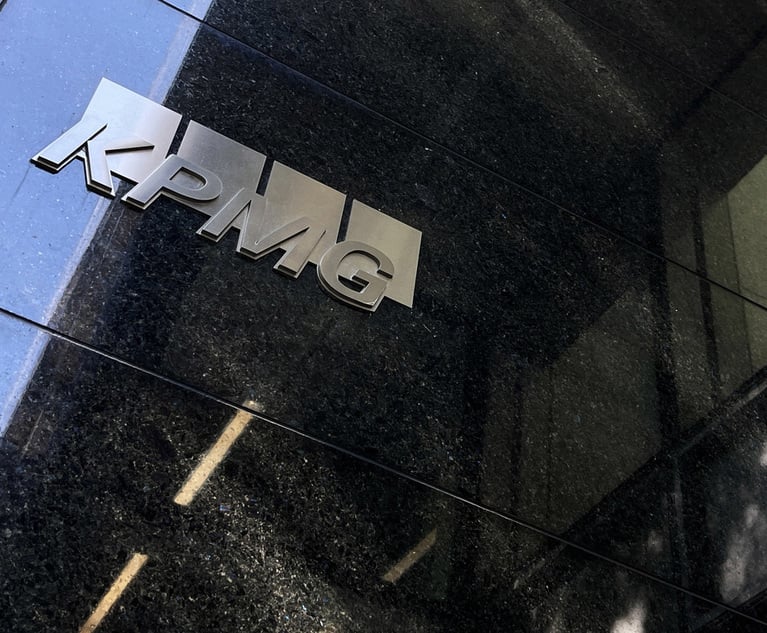Gaping Need for Infrastructure to Drive Projects in Latin America
Project finance work is expected to steam ahead despite unrest and shifting political winds.
January 28, 2020 at 10:00 AM
5 minute read
 Flags of Latin America. (Photo: Shutterstock.com)
Flags of Latin America. (Photo: Shutterstock.com)
Widespread social unrest and shifting political winds in Latin America have complicated efforts to pinpoint where project finance work might take place in the region this year.
Yet, lawyers dedicated to Latin America say the pipeline remains intact: The need for infrastructure is simply too great to forgo investment. The Inter-American Development Bank estimates that the infrastructure investment gap in Latin America and the Caribbean is at 2.5% of gross domestic product, or around $150 billion per year.
Latin America's top economy, Brazil, is likely to see more private sector investment as its federal government steps back from financing infrastructure projects. Pockets of opportunity also remain in Mexico, even after the left-leaning government of the region's second-biggest economy sent shivers through the investment community by canceling a $13 billion airport for the capital that was already one-third built.
Less certain are prospects for the Andes, which saw social tensions boil over in the latter part of 2019, erupting first in Ecuador and soon after in Chile, Bolivia and Colombia. Meanwhile, deep economic troubles in Argentina and Venezuela—once mainstays for legal work—make sizable infrastructure investments in those two countries largely unviable for the time being.
"This year will be a year of coming to terms with the new reality in Latin America, but it won't be an impediment to financing infrastructure," said Alexandro Padrés, a partner in Shearman & Sterling's project development and finance practice.
Investors looking to resize their risk and exposure to specific countries will drive merger and acquisition activity, while private equity groups searching for yield and multilateral institutions could fill a financing void left by more-cautious commercial banks.
Multilateral institutions will continue to finance projects in the region because their mandate is to drive development while achieving financial returns. As recently as December, the International Finance Corp. led a $657 million financing package for the first integrated liquefied natural gas-to-power project in El Salvador, one of the poorest countries in Latin America.
Energía del Pacífico is the largest private sector investment in that nation's history. Once complete, the facility is expected to supply 30% of El Salvador's total energy demand and reduce energy imports from the current 25% to about 5% by 2023.
"They're not shying away because this is exactly when they're supposed to be in these countries: when there are real or perceived political concerns. Multilaterals bring stability and mobilize funds into jurisdictions," Padrés said.
Bob Kartheiser, chair of the Paul Hastings global infrastructure and energy practice, is optimistic that the main Latin American markets for U.S. dollar-based financing and M&A will be "robust" in 2020.
"The fundamentals remain compelling: We are talking about the basic building blocks of an economy with very long-term productive lives when we speak of energy and infrastructure. And in many areas, we see rising demand," Kartheiser said.
Raquel Bierzwinsky, a partner at Norton Rose Fulbright who splits her time between New York and Mexico City, dismisses the possibility that protests in places like Chile and Colombia could derail implementation of projects, "especially if these projects can help with demand for energy and reduce prices."
Colombia, for instance, depends heavily on hydroelectric power. That means, when it's the dry season there, prices go up significantly as generators turn toward older, fossil fuel-generated facilities that are more expensive. Colombia has the political will to attract greater private sector investment that could potentially drive down energy prices, Bierzwinsky said.
Elsewhere, the outlook for energy projects became cloudy in Mexico when leftist Andrés Manuel López Obrador won the presidency in 2018 on promises that he would strengthen state oil and electric companies. Clean energy auctions were postponed, for instance, spooking solar and wind investors.
Yet, the change in leadership of Latin America's second-biggest economy hasn't completely dampened project finance there.
The energy sector reform under the previous administration allowed, for the first time, for private electricity auctions in Mexico. Those who won those private electricity auctions must still obtain financing—that means work for lawyers—while state electric firm CFE is slated to award contracts to build five combined-cycle gas plants.
"People have already invested, and they're looking for ways to sell power," explained Bierzwinsky. "The demand is still there for financing."
Mexico has a glaring need for electricity: The country sees 3-3.5% growth in electric demand each year. In April, power blackouts rolled through the Yucatan Peninsula, a tourist hot spot, as natural gas supplies failed to keep pace with demand.
The most work this year, though, could come from Brazil, a $2 trillion economy that's looking to trim bureaucracy and open more to private investment under pro-business President Jair Bolsonaro.
"In Brazil, the infrastructure has not kept up with the development of the country. There's a huge deficit in infrastructure, which is a cap for growth," explained Grenfel Calheiros, head of the São Paulo office at Simpson Thacher & Bartlett.
Government development bank BNDES is pulling back from infrastructure projects in Brazil, while interest rates in the country hover at an all-time low 4.5%. It's a recipe for more creative, privately-sourced financing.
"People may have to resort to project finance—previously they didn't have to because they had access to cheaper, government financing," Calheiros added.
This content has been archived. It is available through our partners, LexisNexis® and Bloomberg Law.
To view this content, please continue to their sites.
Not a Lexis Subscriber?
Subscribe Now
Not a Bloomberg Law Subscriber?
Subscribe Now
NOT FOR REPRINT
© 2025 ALM Global, LLC, All Rights Reserved. Request academic re-use from www.copyright.com. All other uses, submit a request to [email protected]. For more information visit Asset & Logo Licensing.
You Might Like
View All

Is KPMG’s Arizona ABS Strategy a Turning Point in U.S. Law? What London’s Experience Reveals
5 minute read
KPMG Moves to Provide Legal Services in the US—Now All Eyes Are on Its Big Four Peers

International Arbitration: Key Developments of 2024 and Emerging Trends for 2025
4 minute readTrending Stories
- 1South Florida Attorney Charged With Aggravated Battery After Incident in Prime Rib Line
- 2'A Death Sentence for TikTok'?: Litigators and Experts Weigh Impact of Potential Ban on Creators and Data Privacy
- 3Bribery Case Against Former Lt. Gov. Brian Benjamin Is Dropped
- 4‘Extremely Disturbing’: AI Firms Face Class Action by ‘Taskers’ Exposed to Traumatic Content
- 5State Appeals Court Revives BraunHagey Lawsuit Alleging $4.2M Unlawful Wire to China
Who Got The Work
J. Brugh Lower of Gibbons has entered an appearance for industrial equipment supplier Devco Corporation in a pending trademark infringement lawsuit. The suit, accusing the defendant of selling knock-off Graco products, was filed Dec. 18 in New Jersey District Court by Rivkin Radler on behalf of Graco Inc. and Graco Minnesota. The case, assigned to U.S. District Judge Zahid N. Quraishi, is 3:24-cv-11294, Graco Inc. et al v. Devco Corporation.
Who Got The Work
Rebecca Maller-Stein and Kent A. Yalowitz of Arnold & Porter Kaye Scholer have entered their appearances for Hanaco Venture Capital and its executives, Lior Prosor and David Frankel, in a pending securities lawsuit. The action, filed on Dec. 24 in New York Southern District Court by Zell, Aron & Co. on behalf of Goldeneye Advisors, accuses the defendants of negligently and fraudulently managing the plaintiff's $1 million investment. The case, assigned to U.S. District Judge Vernon S. Broderick, is 1:24-cv-09918, Goldeneye Advisors, LLC v. Hanaco Venture Capital, Ltd. et al.
Who Got The Work
Attorneys from A&O Shearman has stepped in as defense counsel for Toronto-Dominion Bank and other defendants in a pending securities class action. The suit, filed Dec. 11 in New York Southern District Court by Bleichmar Fonti & Auld, accuses the defendants of concealing the bank's 'pervasive' deficiencies in regards to its compliance with the Bank Secrecy Act and the quality of its anti-money laundering controls. The case, assigned to U.S. District Judge Arun Subramanian, is 1:24-cv-09445, Gonzalez v. The Toronto-Dominion Bank et al.
Who Got The Work
Crown Castle International, a Pennsylvania company providing shared communications infrastructure, has turned to Luke D. Wolf of Gordon Rees Scully Mansukhani to fend off a pending breach-of-contract lawsuit. The court action, filed Nov. 25 in Michigan Eastern District Court by Hooper Hathaway PC on behalf of The Town Residences LLC, accuses Crown Castle of failing to transfer approximately $30,000 in utility payments from T-Mobile in breach of a roof-top lease and assignment agreement. The case, assigned to U.S. District Judge Susan K. Declercq, is 2:24-cv-13131, The Town Residences LLC v. T-Mobile US, Inc. et al.
Who Got The Work
Wilfred P. Coronato and Daniel M. Schwartz of McCarter & English have stepped in as defense counsel to Electrolux Home Products Inc. in a pending product liability lawsuit. The court action, filed Nov. 26 in New York Eastern District Court by Poulos Lopiccolo PC and Nagel Rice LLP on behalf of David Stern, alleges that the defendant's refrigerators’ drawers and shelving repeatedly break and fall apart within months after purchase. The case, assigned to U.S. District Judge Joan M. Azrack, is 2:24-cv-08204, Stern v. Electrolux Home Products, Inc.
Featured Firms
Law Offices of Gary Martin Hays & Associates, P.C.
(470) 294-1674
Law Offices of Mark E. Salomone
(857) 444-6468
Smith & Hassler
(713) 739-1250








